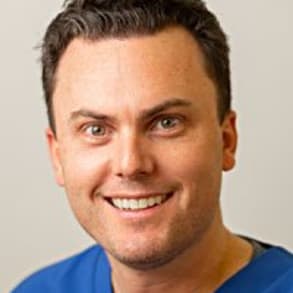A brief video with Dr. Adam Rothenberg discussing RI.HIP solution from Smith+Nephew.
So our purpose today is to talk about our I hip ma uh on Corey and it starts with the suite of technologies that was brought to bear. It comes with, it starts with trauma cad and our digital template ng software to accurately predict what implants will be. Using that information with the use of the king mark will feed into our hip software to execute tilt adjusted cut placement. Um and now on through 5 10 5 10 K. Clearance. We have the Ri hit modeler which some of you should be familiar with, which provides impingement zones for expected postoperative activities and allows us to adjust and fine tune implant positioning based on sitting and standing public radiographs. So that will be coming online soon. I personally got a chance to use it but I've demoed it and then our hip navigation on the right shows the software view of what we'll see here in the product, the video, surgical video. Um And so it's an integrated suite of technologies that makes our hip replacement execution that much smarter. Um This graphic kind of shows the workflow, you know the integration of the flow from the office space where we're getting preoperative radiographs into the preoperative surgical planning phase in your chosen venue or tablet or web based modeling and then in the operating room bringing that to life on your Corey or in my case that kickstand at this time and I utilize a pax integration. So our trauma cad images integrate into packs and then feed into a USB option or a downloadable option with the ethernet cable to our kickstand. So it can be a pretty integrated process where we get preoperative imaging throughout the whole process that provides clarity and implant planning with our reps. Also of note, I'll highlight the bottom left picture. I use a standing king mark and that image shows a standing film just by accident. However, the traditionally the king mark system is based on a supine radiograph. So something we might want to talk about as a group and investigate further as you guys explore this product. Um So what I was asked why I used ri hip navigation. I absolutely love polar. I've been enthusiastic about that since starting practice and got into our I hit because I wanted to do a few things. I wanted to maximize the use of a stem that gave me, You know, 30 size options and restore patients biomechanics. I wanted to avoid instability, never have dislocations um and restore patients function. So that starts with getting the ashtabula um right and doing it in a functional method. You know, we also want to avoid leg length discrepancies over offsetting our patient contributing to lateral hip pain. Um I wanted patients to feel confident in their post operative range of motion. Making sure, you know, with this information, with the model that's coming they can function and live their life without risk of impingement. I wanted to get rid of Flora Skopje because I really find it to be uh trickle e um confusing tool at assessing inter operative native version and inclination. And I wanted to reduce my surgical time. I think that getting the template ng done beforehand, getting the navigation feedback as you're working through the case actually helps me feel confident in moving forward and that I'm executing the plans properly. I also was a trauma cad user to begin with. And I this is the natural um progression is to integrate this more seamlessly into my surgical workflow. And also add that as a surgeon, these navigation codes from my practice have been valuable with ongoing reductions and reimbursement. It's demonstrated improvement in my R. Bu flows as well. Um I we want to make sure that these tools work. Um and there dr Davis um out of the UK has demonstrated it and although admittedly lower end numbers and where we need to further substantiate it. They've seen really solid data on getting accurate inclination and an aversion angles in both the lateral position and for a post your approach as well as an anterior approach. So, in comparison to cT scans, we're seeing extremely accurate Reproduction of inclination and aversion and replacement in the safe zone. This is one of those studies really at all. Out of 2012, this was using this computer navigation um that the inclination here was 44 with the ri hip navigation. The C. T. Scan again showed that within 440.5 degree average, you know, deviation from the the navigation software and the version was right onto so again, we need to expand these ends. But the studies that we've shown have been really accurate and I've actually started my own investigator initiated study for this. And what we're seeing thus far preliminary data is that with over 200 patients and the system is working for us. you know, and again, that main goal also of having consistent leg length restoration. Here, we had a very accurate re establishment of leg length and femoral offset within a millimeter or so, um which is our goal and way better than I think I can do without technology.


